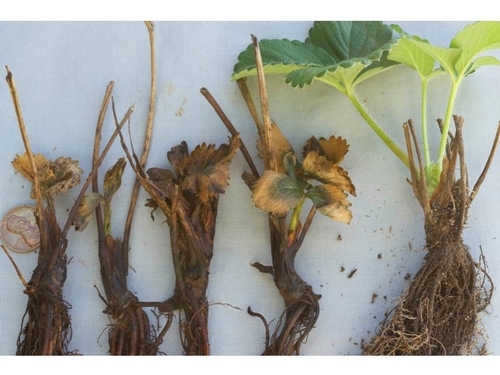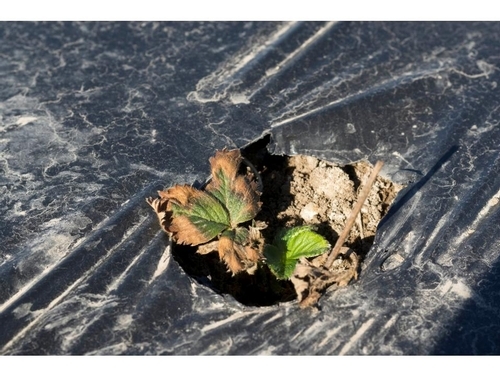People should be super aware right now that the lack of rain we are experiencing is certain to exacerbate salt problems in berries this winter. I’ve been driving around a bit visiting fields, growers and PCA’s and the problem doesn’t yet seem too bad although I am starting to see a little bit of damage here and there. Still, I have a strong sense of foreboding that this could get big as the season progresses on the Central Coast without any rain.
See the pictures below from colleague Steven Koike for what salt damage looks like in strawberries.
Key points to keep in mind regarding winter management of salinity (Many thanks to Dr. Stuart Styles from Cal Poly in San Luis Obispo for giving me a copy of the entire data notebook of his work on salinity in strawberries from which I draw the points below - I treasure this book and it has been very useful to my understanding of this topic):
1. Salinity is a key determinant in the healthy establishment of strawberry transplants, and young plants do not tolerate elevated levels of salinity for very long. Certain literature seems to say that soil salinity EC of above 4.0 dS/m would result in total loss of fruit yield, but Dr. Style’s work demonstrates this is going to depend where exactly this salinity is to be found. His work and my own experience in the field informs us that if the grower acts quickly and the salinity is kept away from the roots, the effect on fruit yield could be much less.
2. Salts come from various sources including irrigation water, gypsum, fertilizers and especially composting (which is why I think we tend to see more salt damage in organically farmed berries).
3. Rain has a HUGE effect on soil salinity. According to the work of Dr. Styles and his colleagues, a single heavy rain can lower soil salinity by 50%; less so because of the quantity of water but because the rainwater has a low pH and zero salt content.
4. Salinity of irrigation water has a real impact on fruit yields. Water salinity of less than 1.0 dS/m will have very little impact on yield, but as the irrigation water salinity creeps over 1.2 dS/m the effect can be substantial.
Attached Images:

Picture showing the progression of salt damage in strawberry transplants. Photo courtesy Steven Koike, UCCE.

Close up of strawberry transplant experiencing high soil salinity. Note burnt appearance of leaf margins. Also of note is salty residue on the black bed plastic. Photo courtesy Steven Koike, UCCE.